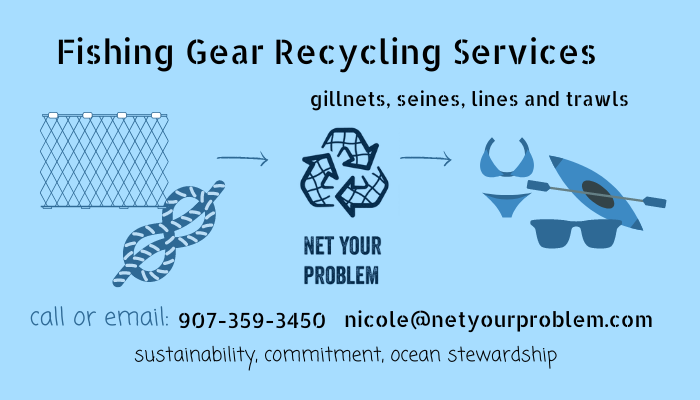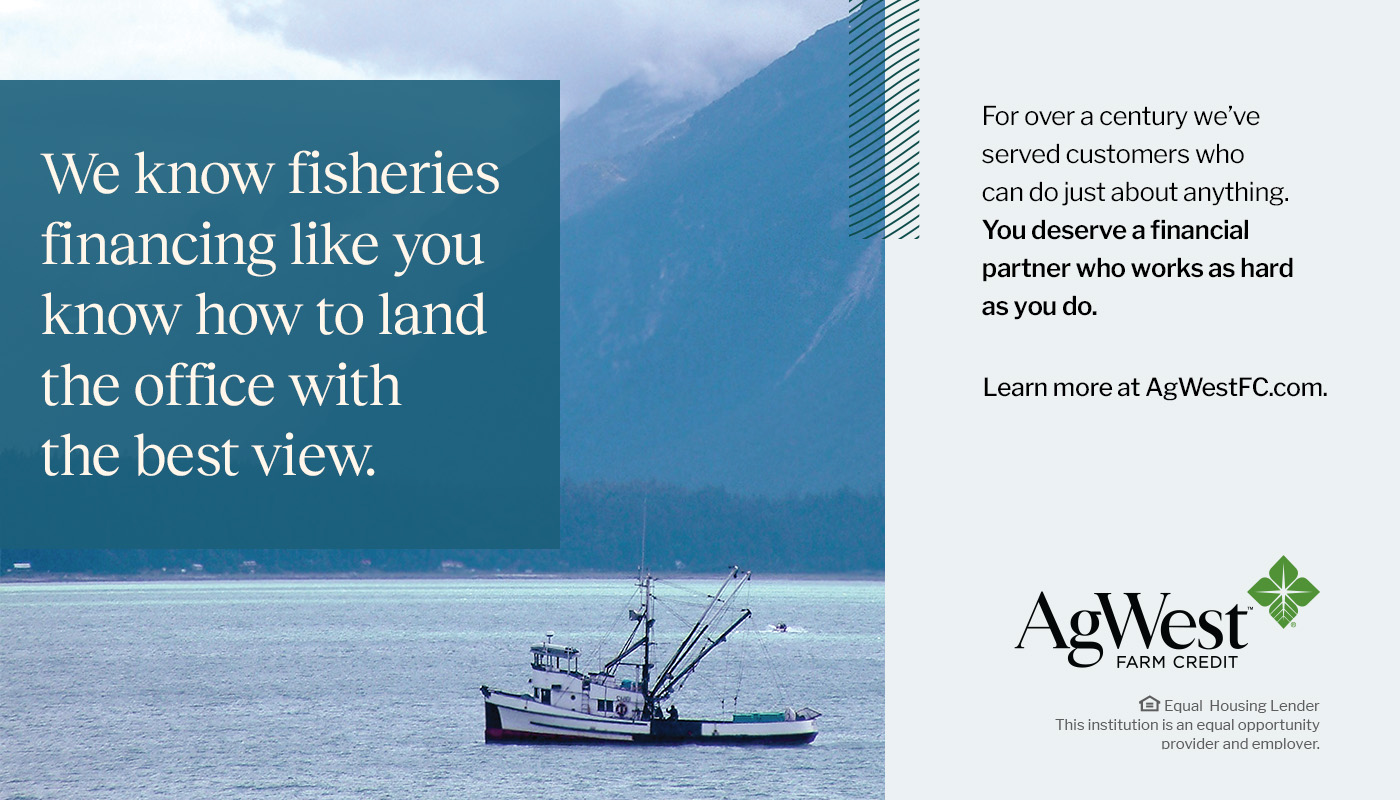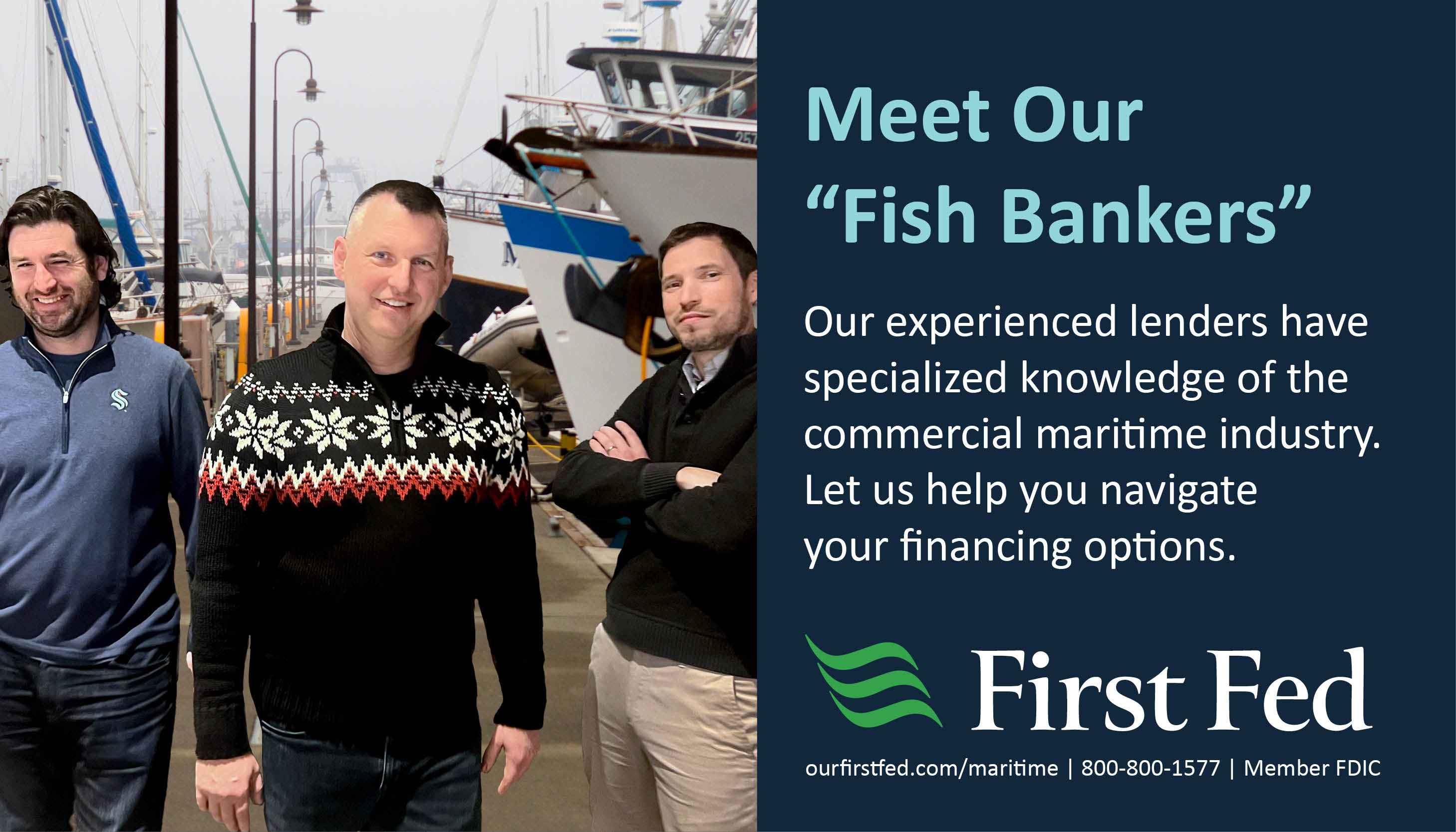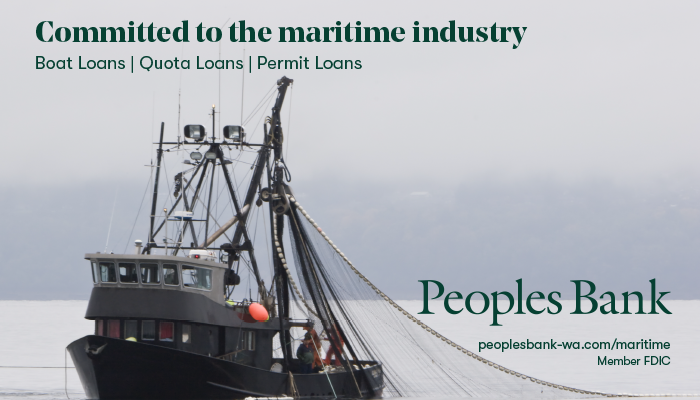Fish Factor by Laine Welch
May 28, 2021
Alaskan interest in growing kelp continues to outpace that of shellfish, based on applications filed during the annual window that runs from January through April.
The number of 2021applicants dropped to just seven, reversing a steady upward trend that reached 16 last year, likely due to a “wait and see” approach stemming from the pandemic.
“We had people whose personal situations changed because of COVID. They became homeschooling parents, things like that, where they can no longer dedicate the time they thought they were going to have out on a farm site,” said Michell Morris, permit coordinator at the Alaska Dept. of Fish and Game. The agency partners with the Dept. of Natural Resources, which leases the lands where aquatic farming takes place.
Of the new applicants, six plan to grow kelp in waters of Kodiak, Yakutat and Cordova and one intends to farm oysters at Sitka.
So far 76 active aquatic farm and nursery permits in Alaska comprise nearly 900 acres and 35 pending new applications total 1631.32 acres, Morris said.
Most of the active farms (42) are located throughout Southeast, with 26 in the Southcentral regions of Cook Inlet and Prince William Sound and eight at Kodiak.
The number of operations reporting sales through 2020 stayed steady at 28, said Flip Pryor, ADF&G statewide aquaculture section chief. Overall, sales last year dropped to approximately $1.08 million, down from $1.5 million, with Pacific oysters making up about 80% of the value.
“Production in 2020 dropped below one million oysters for the first time since 2016,” Pryor said.
At the same time, sales of primarily ribbon and sugar kelp doubled, topping 230,000 pounds.
“The statewide value of aquatic plants was just under $200,000, which is a nice jump from $60,000 in 2019,” Pryor added.
Nearly all of the kelp sales came from three Kodiak growers who expect to produce up to 300,000 pounds this year, according to the Kodiak Daily Mirror. All sell their harvests to Blue Evolution, a California-based buyer that produces kelp popcorn, pastas and powders.
Alaska kelp pioneer, Nick Mangini of Kodiak Island Sustainable Seaweed (KISS), also is working with the Dept. of Energy on a biofuel project that would eventually need hundreds of millions of pounds of product.
Small growers fill a niche, Pryor said, but it will take bigger operators to scale up the industry’s economic potential.
“Small growers can do things like supply local restaurants because of very low transport costs compared to shipping stuff down to the Lower 48. But it's going to take those big farms and the big processors that have money to invest to bring that volume up and make those economies of scale happen and provide a constant product,” he said. “People who are buying kelp for biofuels, for example, don't want a boom and bust sort of thing. They want to know they can count on X number of pounds every single year. And that's definitely going to take some big operations in the water.”
Courtesy of ADF&G
Shellfish safety zone - Kachemak Bay appears to be a refuge from ocean acidity levels that prevent shellfish and marine creatures from growing skeletons and shells.
That’s based on first results of a study begun in 2017 that placed an array of sensors nearshore to test for carbon dioxide levels which indicate ocean acidity. The tested regions never indicated long term periods of corrosivity, and that's good news for aqua-farmers doing business in the Bay.
Researchers found that Kachemak Bay also is one of the most variable places on earth in terms of hourly acidic changes, likely due to its vast tidal range.
“I think it's the second largest in the world being about eight meters or 24 feet in total, in June and December,” said Cale Miller, at the University of California who led the study for his doctoral thesis at the University of California. “The other thing that's important is the oceanography of the Bay itself. You get a lot of influx from the Gulf of Alaska and Cook Inlet, and the Homer Spit bisects the Bay into two distinct regions that have different oceanographic patterns. There's evidence that organisms, especially the photosynthesizing organisms, are different between the inner and outer portions of the Bay. And those are what you would call the lower trophic level or food chain items for a lot of other organisms that they live on.”
Miller worked under the guidance of Amanda Kelly, an assistant professor at the University of Alaska at Fairbanks who said the multi-year study will give a better gauge of corrosive water conditions, and when they are occurring.
“One of the benefits of studies like these is that we're able to identify areas that are potentially good for shellfish or maybe not so good, or maybe better for seaweed aquaculture,” she said. “It allows for mitigation planning and community adaptation planning. Let's say you shift focus from one species to another as an example of mitigation, or maybe a change in the time of year that fisheries are open to better fit with these changing conditions. They need to be able to better strategize for their long term future.”
Research shows that Southwest and Southeast Alaska are at higher risk for ocean acidity and Juneau is already identified as a hot spot. Kelly said that area is on their research radar, as are other Alaska regions.
“I got an Alaska Sea Grant Award to do a comparison of Kachemak Bay versus Juneau. I have pH sensors down in Juneau and that’s part of our next step in terms of looking at other areas regionally. So that's exciting,” she said.
(The term "pH" stands for "potential of hydrogen," a measure of how acidic water is. The range goes from 0 to 14, with 7 being neutral. Levels of less than 7 indicate acidity.)
In other good news: This fall the state ferry Columbia will resume testing a stretch of nearly 1,000 water miles for acidity, a project that began in 2017 but was derailed last year due to the pandemic. The ferry runs from Southeast Alaska across British Columbia to Bellingham, Washington. It is part of an Alaska/Canada project to understand
The Columbia data will be uploaded daily to the Alaska Ocean Acidification Network website.
Frankenfish for sale! The first sales of over five tons of genetically engineered Atlantic salmon are on their way to U.S. restaurants and food service outlets where customers will not be told what they’re eating.
Federal labeling law “directs” companies to disclose genetically modified ingredients through use of a QR code, on-package wording or a symbol. Mandatory compliance takes effect in January 2022, but the rules don’t apply to restaurants or providers of meals away from home.
The Associated Press reports thus far, the only customer to announce it is selling the salmon is Samuels and Son Seafood, a Philadelphia-based distributor.
Bio-tech producer AquaBounty raises the manmade fish that are genetically tweaked to grow twice as fast as wild salmon, reaching an 8-12 pound market size in 18 months rather than the normal three years. The fish are reared at an indoor growing facility in Indiana with other locations planned.
“Most of the salmon in this country is imported so having a domestic source of supply that isn’t seasonal like wild salmon and that is produced in a highly-controlled, bio-secure environment is increasingly important to consumers,” CEO Sylvia Wulf told the AP.
AquaBounty markets the salmon as disease- and antibiotic-free, saying it comes with a reduced carbon footprint and none of the risk of polluting marine ecosystems as in traditional sea-cage farming.
The FDA approved the AquAdvantage Salmon as “safe and effective” in 2015. It was the only genetically modified animal approved for human consumption until they ok’d a pig for food and medical products last December.
Water watch - Department of Environmental Conservation Commissioner Jason Brune has rejected a state judge’s recommendation that it was wrong for DEC to issue a Clean Water Act certificate to Donlin Gold, the world’s largest gold mine planned upstream from villages along the Kuskokwim River.
The state issued a “certificate of reasonable assurance” to Donlin in August 2018 saying it believed its operations would comply with state water standards. But state judge Kent Sullivan last month ruled in favor of Orutsararmiut Native Council, finding the certificate was improperly issued because the mine would not meet Alaska water quality standards, especially regarding high levels of mercury.
Brune, who was appointed by Gov. Dunleavy, worked for several years as the U.S. public affairs manager for London-based Anglo American, a 50% partner in the Pebble Mine until it walked away from the project in 2013.
Resolutions opposing the Donlin project have been adopted by the Association of Village Council Presidents which represents 56 tribes, 13 Tribal Governments, the Yukon Kuskokwim Health Corporation, and the National Congress of American Indians.






